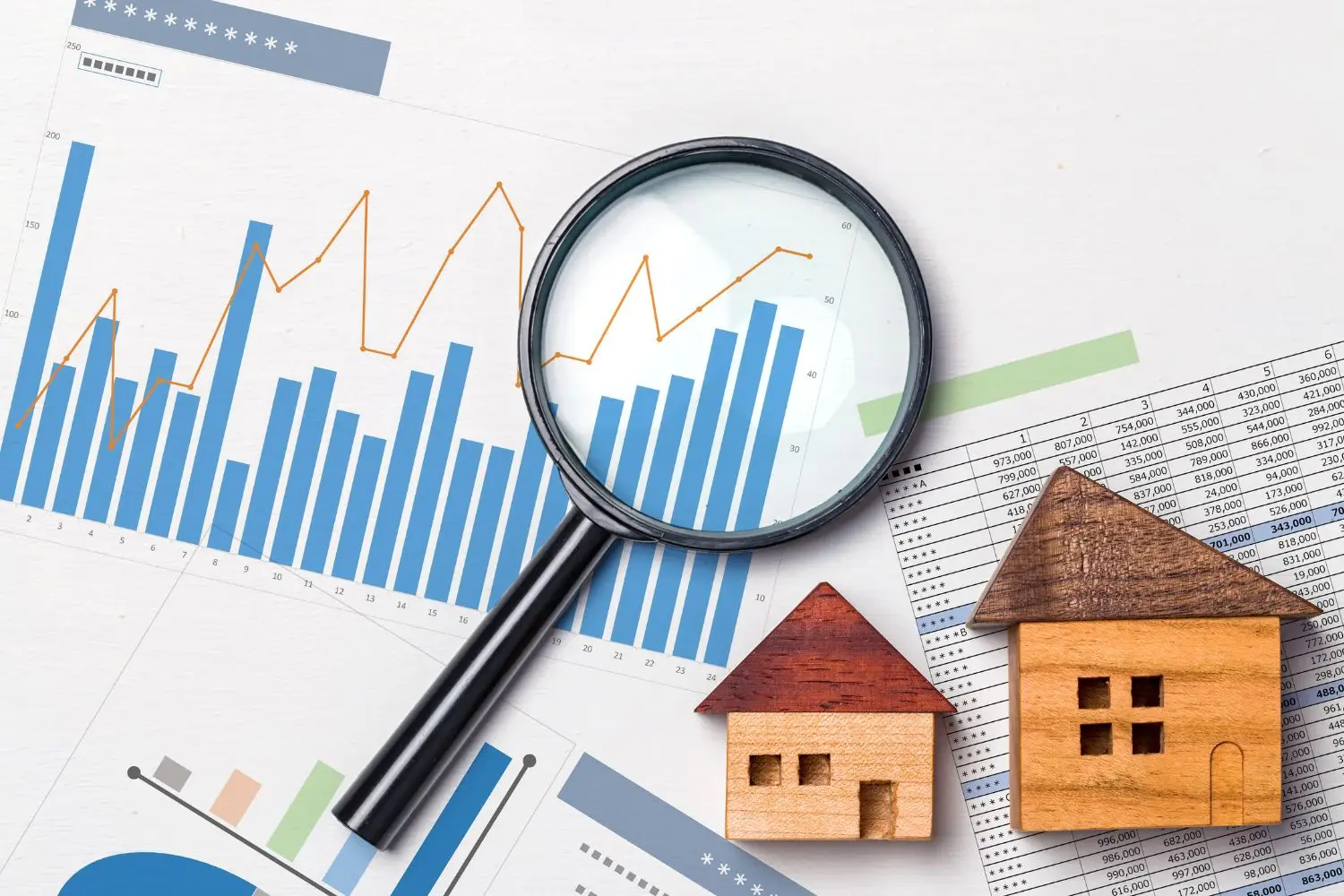In today’s fast-paced and highly competitive property market, making informed decisions is crucial for anyone looking to invest in real estate. Whether you’re a first-time buyer, a seasoned investor, or someone looking to purchase a second home, leveraging property data and analytics can provide a significant edge. Estate agents in London say, property data and analytics not only help you identify trends and opportunities but also allow you to assess risks, calculate returns, and make well-informed buying decisions. This article explores how to use property data and analytics effectively to guide your property investments in the UK.
1. Understanding the Types of Property Data Available
Before diving into the application of analytics, it’s important to understand the types of property data available and how each can be used to inform your buying decisions. Various sources provide detailed information that can be crucial in evaluating the potential of a property.
a. Historical Property Prices
Historical data on property prices is one of the most fundamental types of information you’ll need. By examining how prices have fluctuated over time in a particular area, you can gain insights into market trends and identify areas with strong growth potential.
- Where to Find It: Platforms such as Zoopla, Rightmove, and the Land Registry provide detailed historical price data. The UK House Price Index (HPI) offers comprehensive data on average property price changes across regions and property types.
- How to Use It: By comparing historical prices, you can identify areas where property values have steadily increased, signalling good investment potential. Conversely, areas with declining prices may indicate higher risk, although these could also present opportunities for value purchasing if revitalisation is planned.
b. Current Market Trends and Demand
Current data on property demand and market conditions provides real-time insights into where people are buying and renting. Monitoring supply and demand in different areas can help you spot opportunities in emerging markets or avoid overpriced regions.
- Where to Find It: Real estate platforms like Rightmove and Zoopla often display real-time data on how many people are viewing or saving properties in a particular area. co.uk also offers market trend reports, including the number of properties for sale or rent.
- How to Use It: High demand for properties in a certain area, especially with limited supply, often leads to price increases in the future. Understanding current demand helps you buy in areas that are poised for growth, while avoiding regions where market saturation could lead to stagnant or falling prices.
c. Rental Yields and Investment Returns
If you’re purchasing property as an investment, understanding rental yields and return on investment (ROI) is essential. Rental yield represents the annual rental income as a percentage of the property’s value, giving you an indication of how profitable a rental property will be.
- Where to Find It: Many property websites provide estimates of rental yields for specific areas. Zoopla and Rightmove have tools that offer yield calculations based on current market rents and property prices. PropertyData is a powerful platform offering in-depth analytics on rental yields, capital appreciation, and more.
- How to Use It: High rental yields (typically above 5%) can indicate areas where property investment will generate solid returns. However, it’s essential to balance rental income with the potential for property value appreciation, especially in cities like London, where yields might be lower but capital growth potential is higher.
d. Crime Rates and Neighbourhood Statistics
Neighbourhood data is increasingly important for homebuyers and investors. Crime rates, school quality, and local amenities can all significantly impact property values and rental demand.
- Where to Find It: Websites like uk provide localised crime data, while ONS (Office for National Statistics) offers detailed demographic data, including education quality, employment levels, and housing tenure. StreetCheck is another helpful tool for understanding neighbourhood characteristics.
- How to Use It: Properties in low-crime areas, with good schools and transport links, tend to hold or increase their value. If the area is improving or undergoing regeneration, it could be an indicator of rising property values in the future.
2. Applying Analytics to Inform Your Property Decisions
Once you’ve gathered the relevant property data, the next step is to apply analytics to turn this information into actionable insights. Here’s how to use data analytics to inform your property buying decisions.
a. Identifying Emerging Markets
One of the key benefits of property analytics is the ability to identify emerging markets—areas where prices are still relatively low, but growth is expected. By analysing a combination of historical price trends, new infrastructure projects, and changes in local amenities, you can spot areas poised for future appreciation.
- Example: Cities like Birmingham and Manchester have seen significant investment in infrastructure, including new transport links like HS2, which has driven up property values in surrounding areas. By using property analytics to identify such trends early, you can invest before prices surge.
b. Assessing Investment Risk
Property data and analytics allow you to assess the risk associated with a property investment. By examining market volatility, local crime rates, and the historical performance of property values, you can gauge whether an area is likely to retain or lose value over time.
- Example: An area with high rental yields but increasing crime rates may not be sustainable in the long term. Analytics can help you determine whether short-term gains are worth the risk of longer-term devaluation.
c. Forecasting Future Property Values
Predictive analytics, which use historical data and trends to forecast future outcomes, can be invaluable in estimating the potential appreciation of a property. While no forecast is 100% accurate, these models can provide a general idea of how property values may evolve over the next five to ten years.
- Example: If you see consistent price increases in a specific neighbourhood, combined with low supply and growing demand, it’s likely that property values will continue to rise. Tools like Zoopla’s price estimate or PropertyData’s future price forecasts can give you a rough estimate of future market conditions.
d. Balancing Yield with Capital Growth Potential
For investors, it’s important to strike a balance between rental yields and capital growth potential. Some areas may offer high yields but limited long-term appreciation, while others may provide strong capital growth but lower yields. Data analytics can help you find areas that offer both.
- Example: In cities like Liverpool and Nottingham, rental yields are relatively high, making them ideal for investors focused on generating steady rental income. Meanwhile, areas in and around London may offer lower yields but better long-term capital growth.
3. Practical Tools for Property Data and Analytics
Several online platforms and tools make it easier for buyers and investors to analyse property data and make informed decisions. Here are some key tools to consider:
- Zoopla/Rightmove: These platforms offer essential data on property prices, demand, rental yields, and neighbourhood statistics. They also provide interactive tools for comparing property values over time.
- PropertyData: This platform provides in-depth analysis of property prices, rental yields, demographic data, and market trends across the UK. It is ideal for investors looking for detailed analytics.
- co.uk: A comprehensive resource offering data on house prices, market trends, and rental yields, as well as local amenities and crime statistics.
- Land Registry: The Land Registry offers official data on property transactions and prices, which can help you track how much properties have sold for in a specific area over time.
- ONS (Office for National Statistics): ONS provides demographic, economic, and crime data, which can help you evaluate the long-term viability of an area for property investment.
4. Making Data-Driven Decisions
Once you’ve collected and analysed the data, it’s essential to use these insights to make an informed decision that aligns with your goals—whether that’s buying a family home, investing for rental income, or flipping properties for profit.
a. Set Clear Investment Goals
Decide whether you’re looking for long-term capital growth, steady rental income, or a quick return on investment. The data you’ve gathered will help you identify which areas and property types align with these goals.
b. Regularly Review Market Trends
Property markets change over time, and it’s important to keep up with the latest trends. Regularly reviewing market data and adjusting your strategy can help you stay ahead of shifts in demand or emerging risks.
c. Consider Long-Term Risks
Don’t just focus on current trends. Use analytics to consider long-term risks like changes in interest rates, government policy, and climate change. These factors can significantly impact property values over the next decade.
Final Thoughts
Using property data and analytics can give you a competitive edge in the UK property market, allowing you to make smarter, more informed buying decisions. Whether you’re looking to purchase a home or invest in a buy-to-let property, leveraging data on historical prices, rental yields, and market trends can help you identify opportunities and avoid potential pitfalls. By applying analytics effectively, you can ensure that your property investment strategy is based on solid insights, increasing the likelihood of long-term success.













Leave a Reply